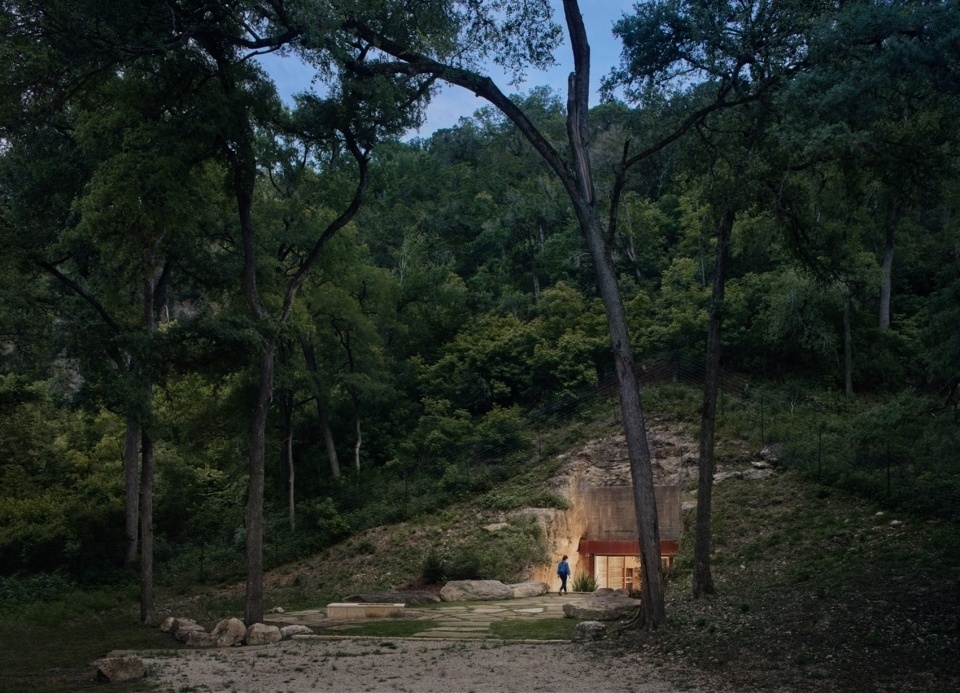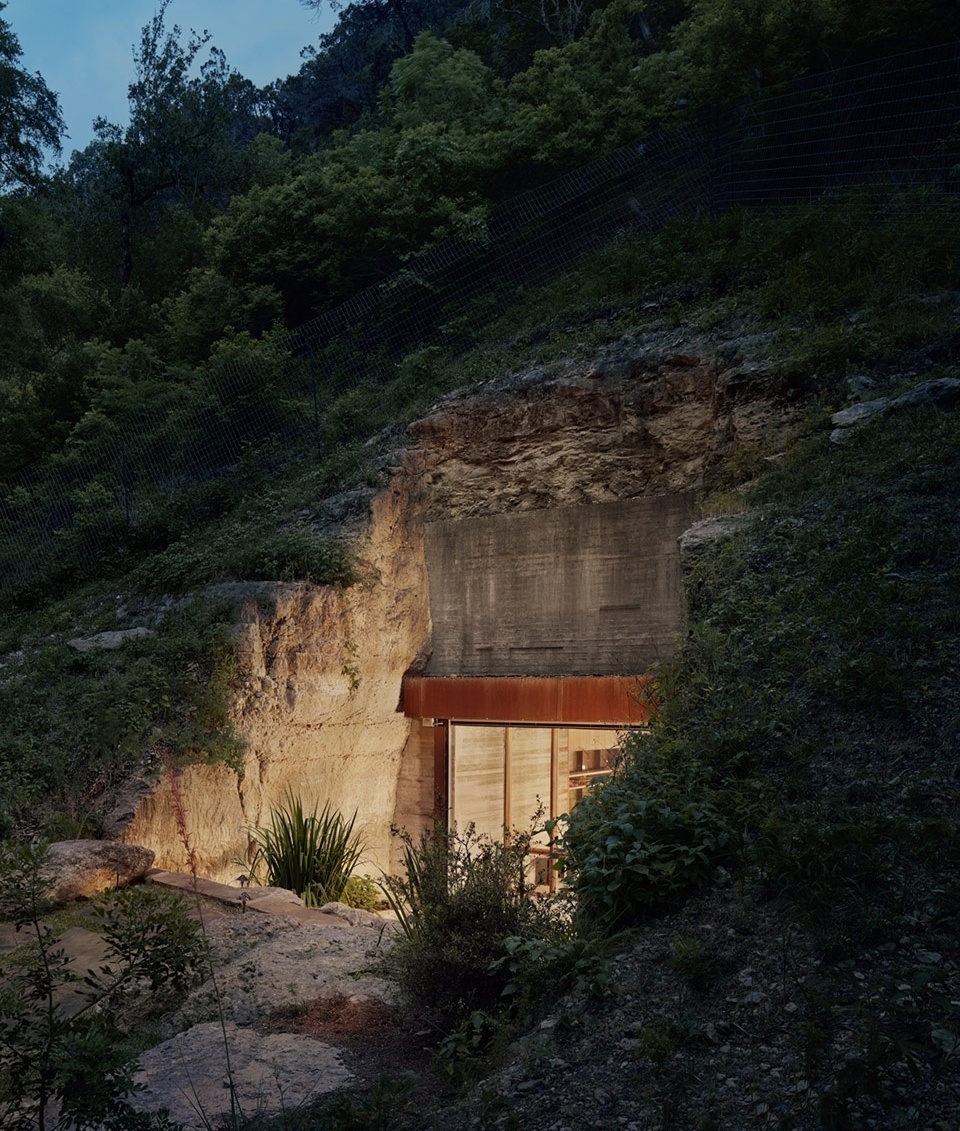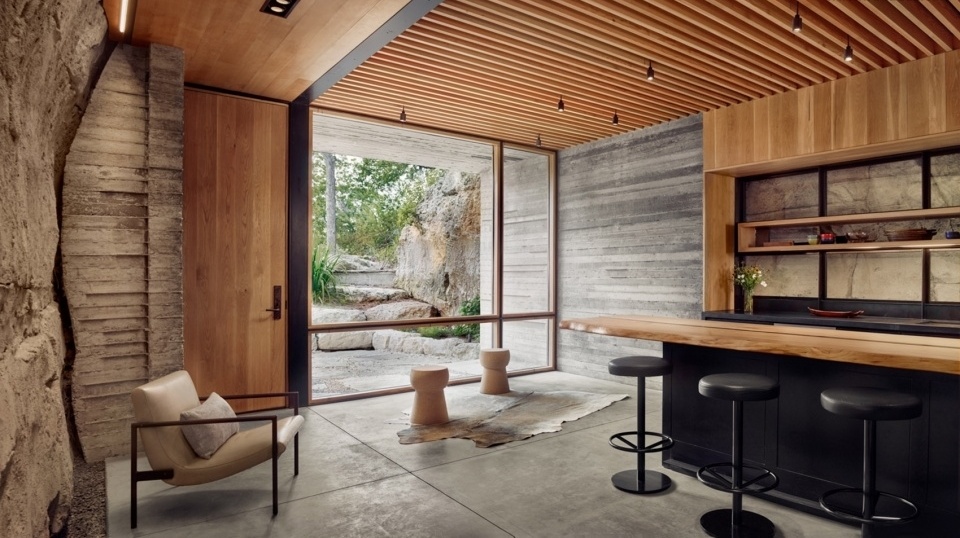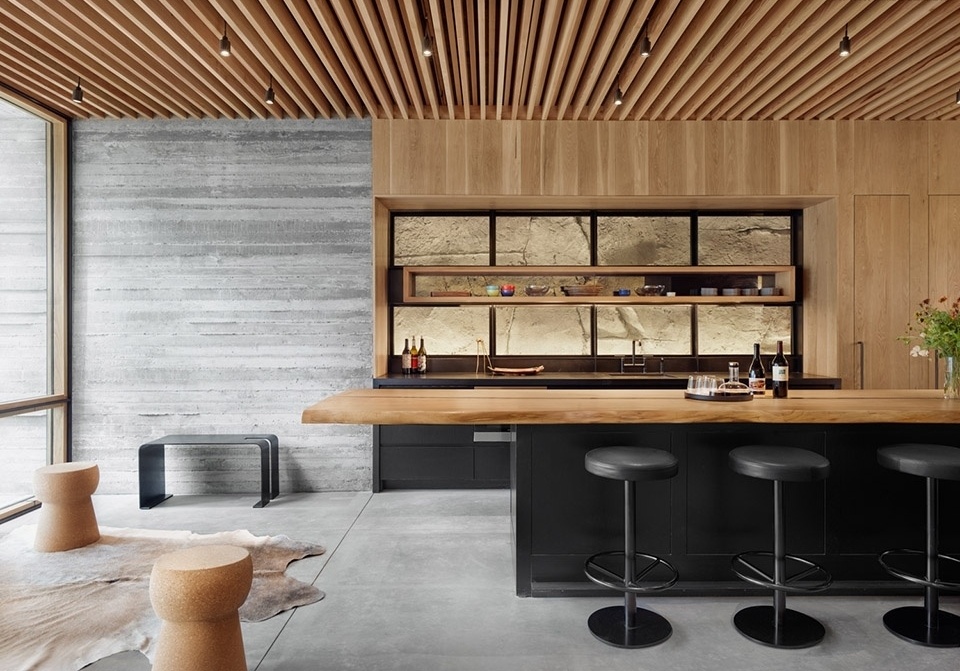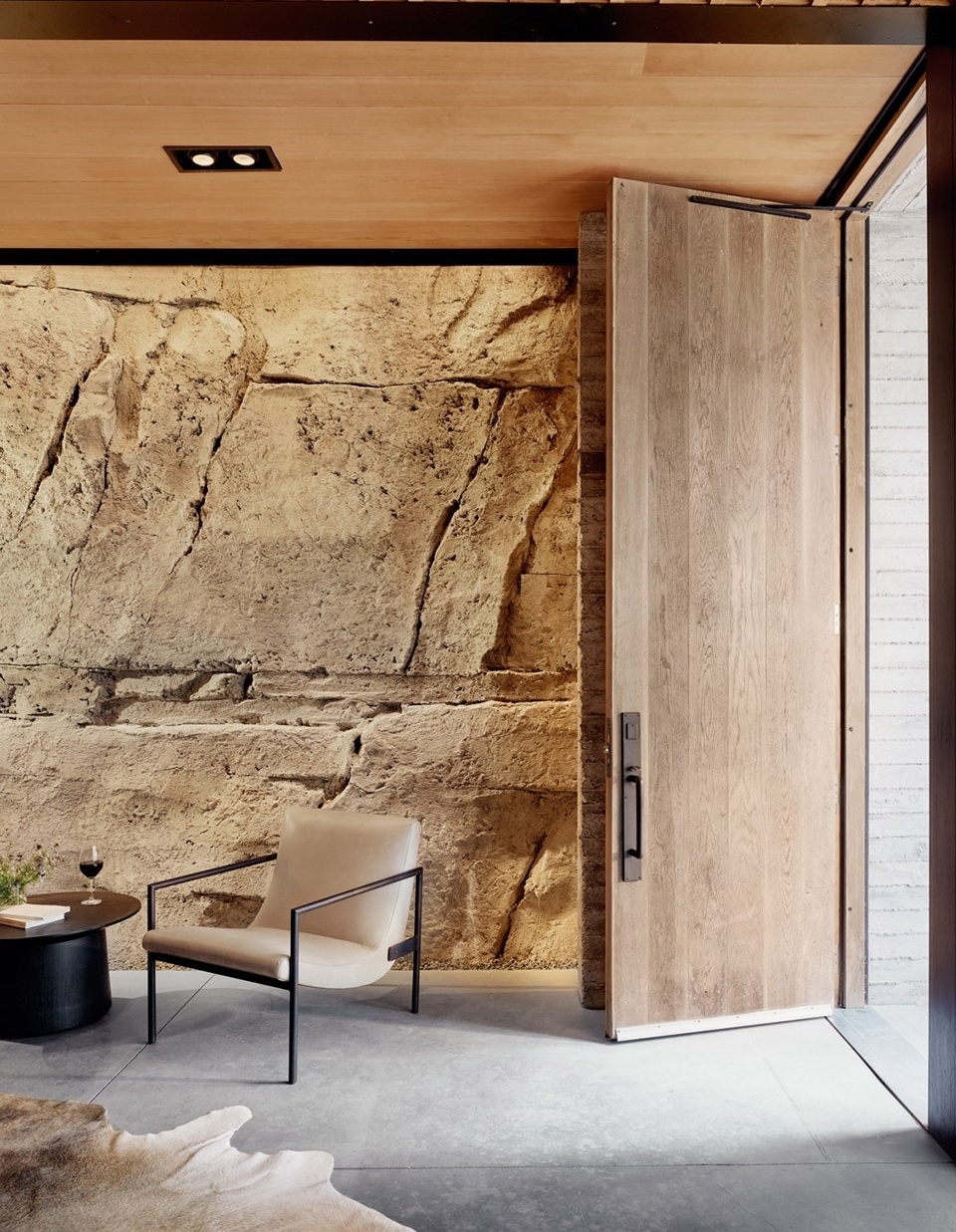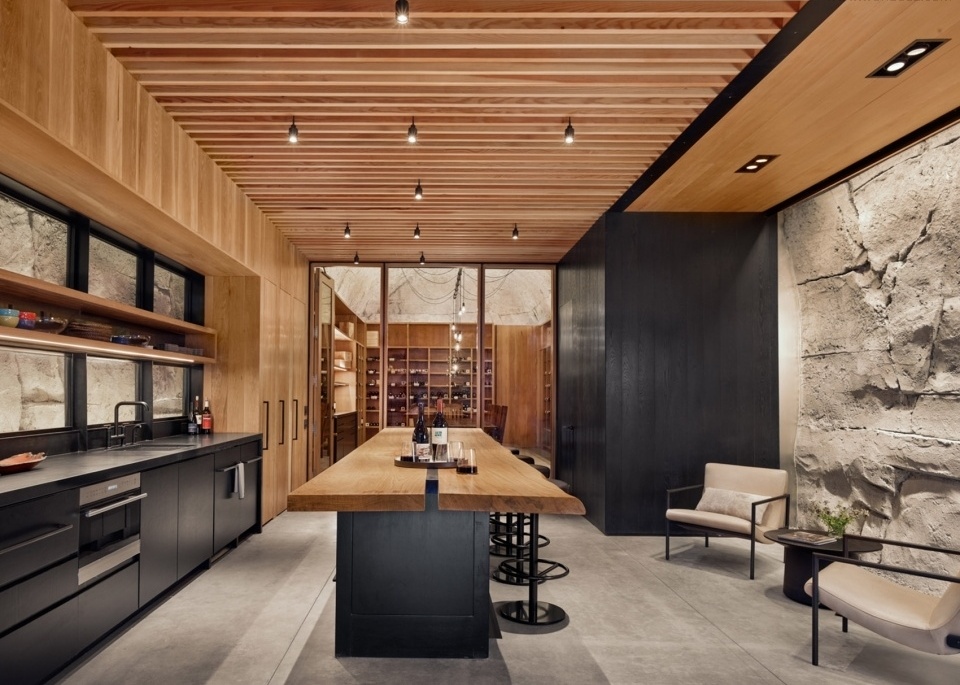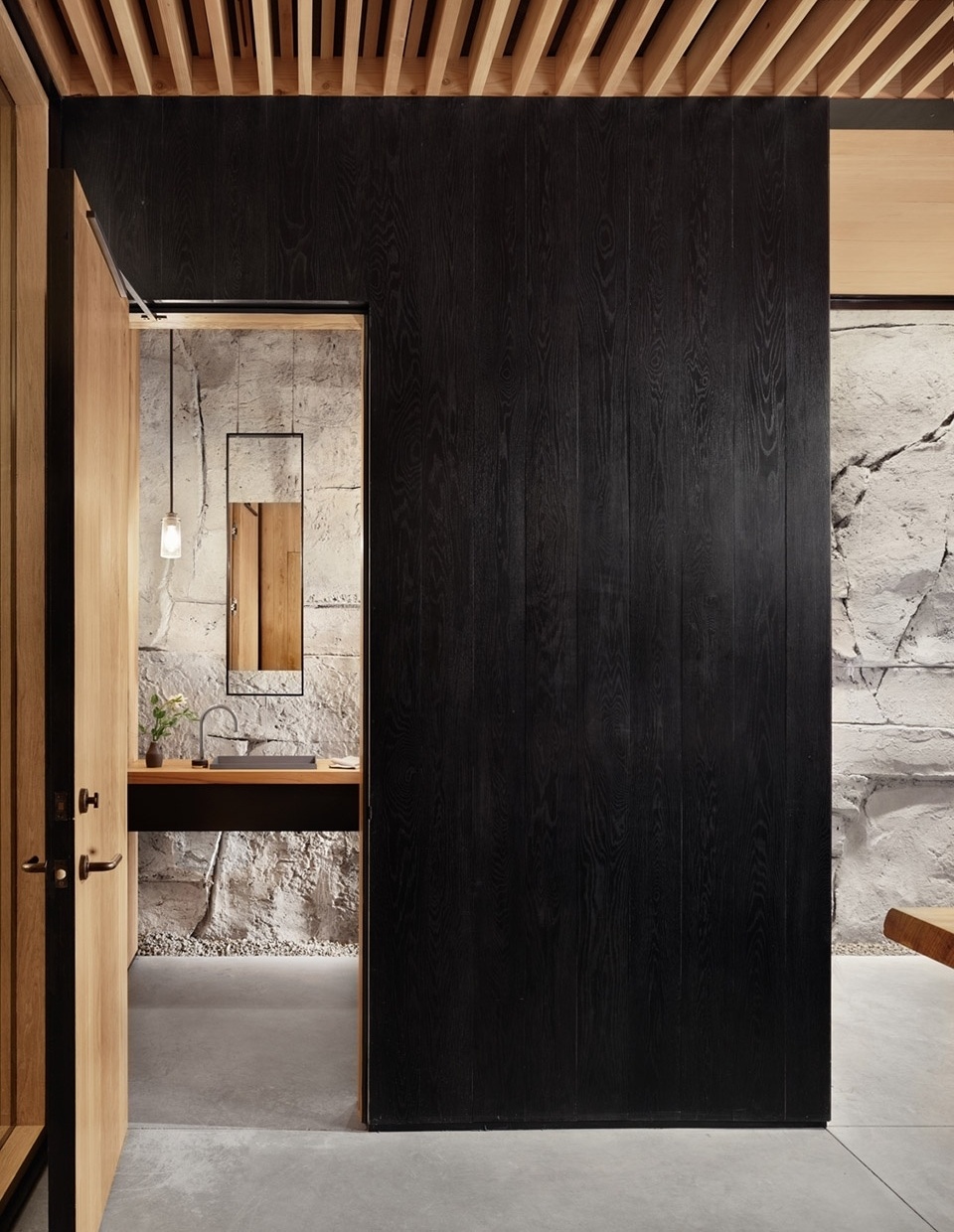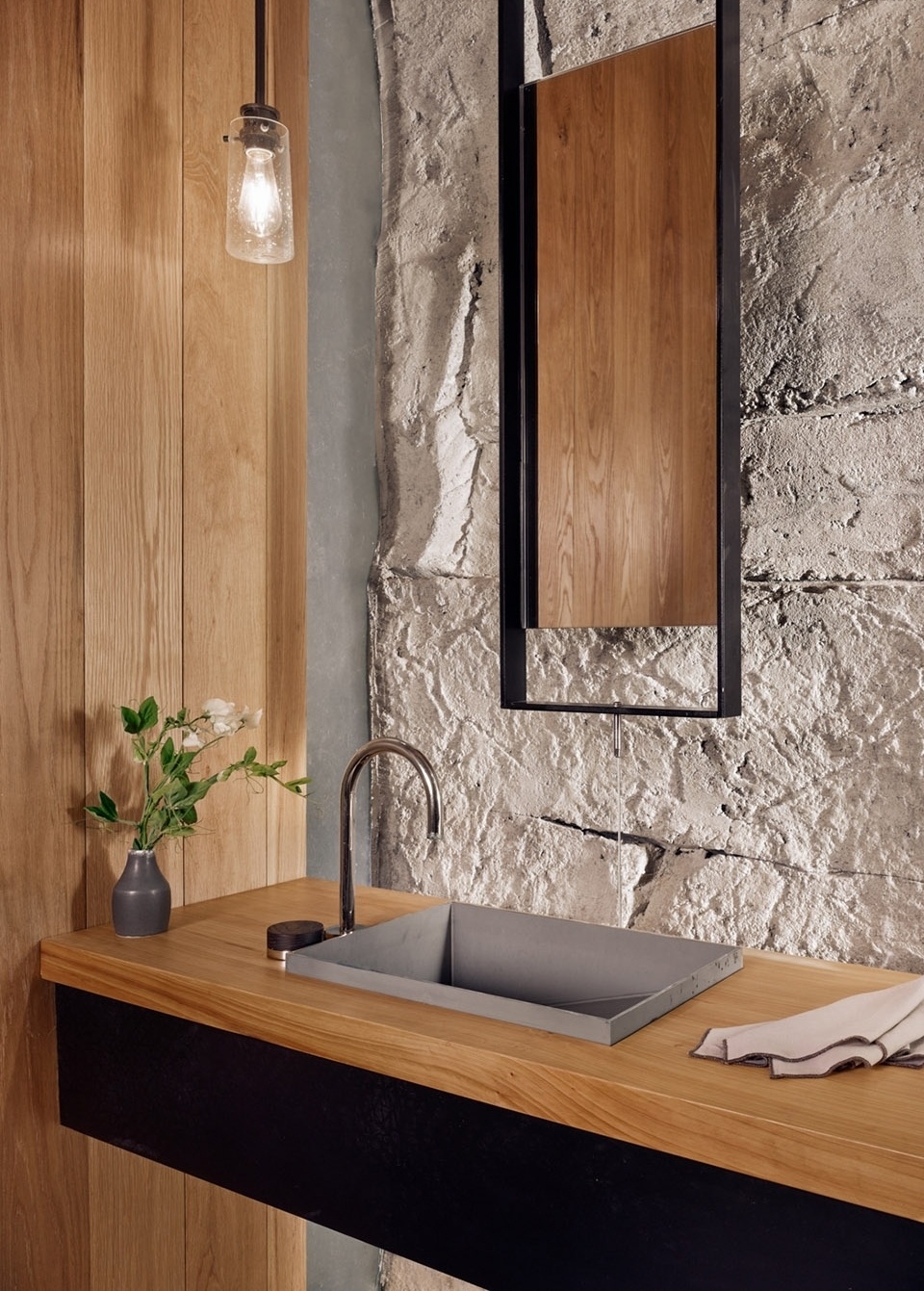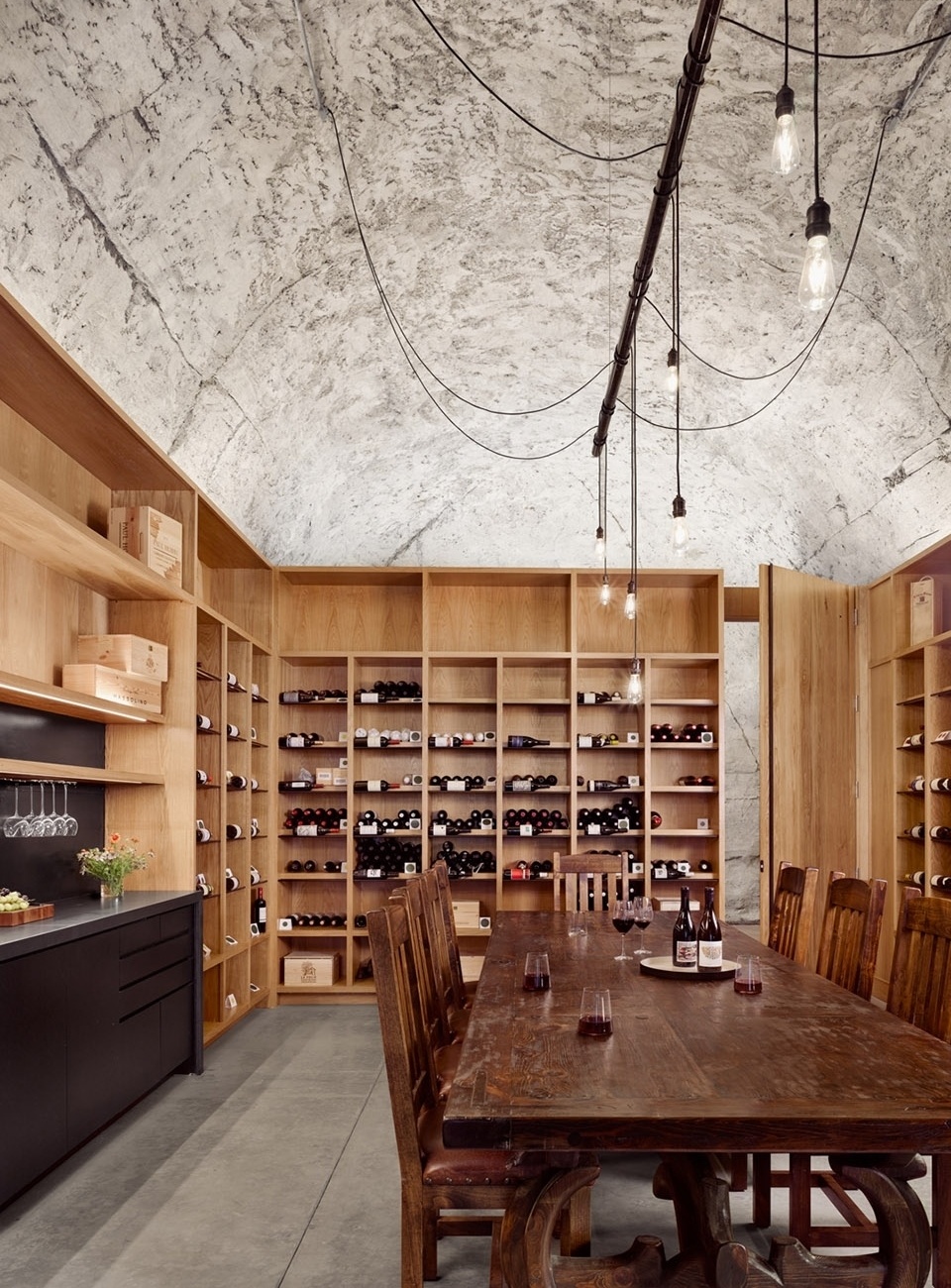在德克萨斯山镇的边缘地带,僻静的小路沿着布兰科河弯曲展开,本案的私人葡萄酒窖便设在这里。建筑师采用喷浆混凝土在石灰岩山坡的北壁打造了一处狭长洞穴,东北侧高大的橡树和榆树形成了天然屏障,将洞穴隐匿在自然景观之中,仅从低调的入口可一瞥室内环境,勾起人们的好奇心。拾级而下,进入洞穴,人的身影便渐渐隐没在巨大的石灰岩体和茂密的植被中。
Located at the eastern edge of the Texas Hill Country, this private wine cave serves as a destination along a secluded bend of the Blanco River. Excavated into the north face of a solid limestone hillside, this shotcrete lined tube is protected on the east and west by tall oak and elm trees, allowing it to nearly disappear within the native landscape. The unassuming exterior entry court reveals a bit of mystery as it provides just a glimpse of what lies within. Heavy limestone boulders, collected from the excavation, and lush vegetation further camouflage the entry as you descend into the mouth of the cave.
▼场地环境,the site © Casey Dunn
品酒室、酒吧、酒窖和洗手间全部在5.5米x21.3米深的隧道空间中排开。洞穴的入口上方覆盖着一块混凝土板,通过石灰岩模具塑造成了不规则表面,从结构上加固了岩壁开口。时间流逝,混凝土将慢慢氧化变绿,并随着苔藓和常春藤的生长与岩壁越贴越紧,直至与侧面的石灰岩墙壁融为一体。
A tasting lounge, bar, wine cellar, and restroom are all tucked into an 18’ tall x 70’ deep existing tunnel. The exterior opening of the cave is capped with a board-formed concrete portal that molds to the irregular surfaces of the limestone and structurally retains the mouth of the earth cut. The concrete is meant to patina naturally over time as native moss and ivy clings to the face and climbs onto the flanking limestone walls to further blend the headwall into its surroundings.
▼洞穴入口,the entrance © Casey Dunn
▼看向室内空间,view of the interior space © Casey Dunn
进入室内,未加工过与经过深色处理的白橡木交替使用,与墙壁和吊顶铺设的直纹花旗松搭配布置。木材温暖的色调与周围坚固的混凝土与石材形成了鲜明对比。钢与木材框定的定制隔热窗划分了内外空间,将娱乐休闲区和冷藏酒窖分离。建筑师还将回收利用的雪松磨碎,制成了色料丰富的板材,应用于品尝吧台和洗手间的盥洗家具中。
Once inside, a study of white oak, both raw and ebonized, mixes with vertical grain Douglas fir to panel the walls and dropped ceilings as a warm contrast to more rugged concrete and stone that surrounds. Custom insulated and thermally broken steel and wood windows provide separation between the interior and exterior, as well as the entertaining lounge and the chilled cellar. Reclaimed cedar was salvaged and milled for live-edged countertop surfaces for the tasting bar and the floating restroom vanity.
▼入口空间,the entrance © Casey Dunn
▼品酒吧台,the tasting bar © Casey Dunn
▼裸露的岩壁,the exposed limestone wall © Casey Dunn
项目负责人Brian Korte介绍说,“洞穴酒窖就像一艘瓶中船。嵌入其中的木质构件与现有洞穴岩壁刻意地保持着距离,保证了房间布置仍有足够的弹性。”
“It’s like a ship in a bottle,” notes Brian Korte, FAIA, lead architect for the project. “The components of the wood insert are deliberately kept away from the existing cave walls so that the room remains adaptable.”
▼看向内部空间,view of the interior space © Casey Dunn
▼卫生间,the bathroom © Casey Dunn
▼细部,details © Casey Dunn
私人酒窖位于洞穴后方的拱顶空间下,四周环绕的酒柜储藏着超过一万瓶左右的佳酿。地下自然的凉爽环境控制着这里的温度,此外,还有辅助降温设施使酒窖可以保持在55-60华氏度。
Sitting under the fully arched profile at the back of the cave, the private cellar is surrounded by casework providing storage for an ever-expanding private collection of +/-10,000 bottles. This space is thermally controlled by the naturally colder subterranean temperatures with supplemental cooling to help maintain an optimal atmosphere of 55-60 degrees.
▼私人酒窖,the private cellar © Casey Dunn

